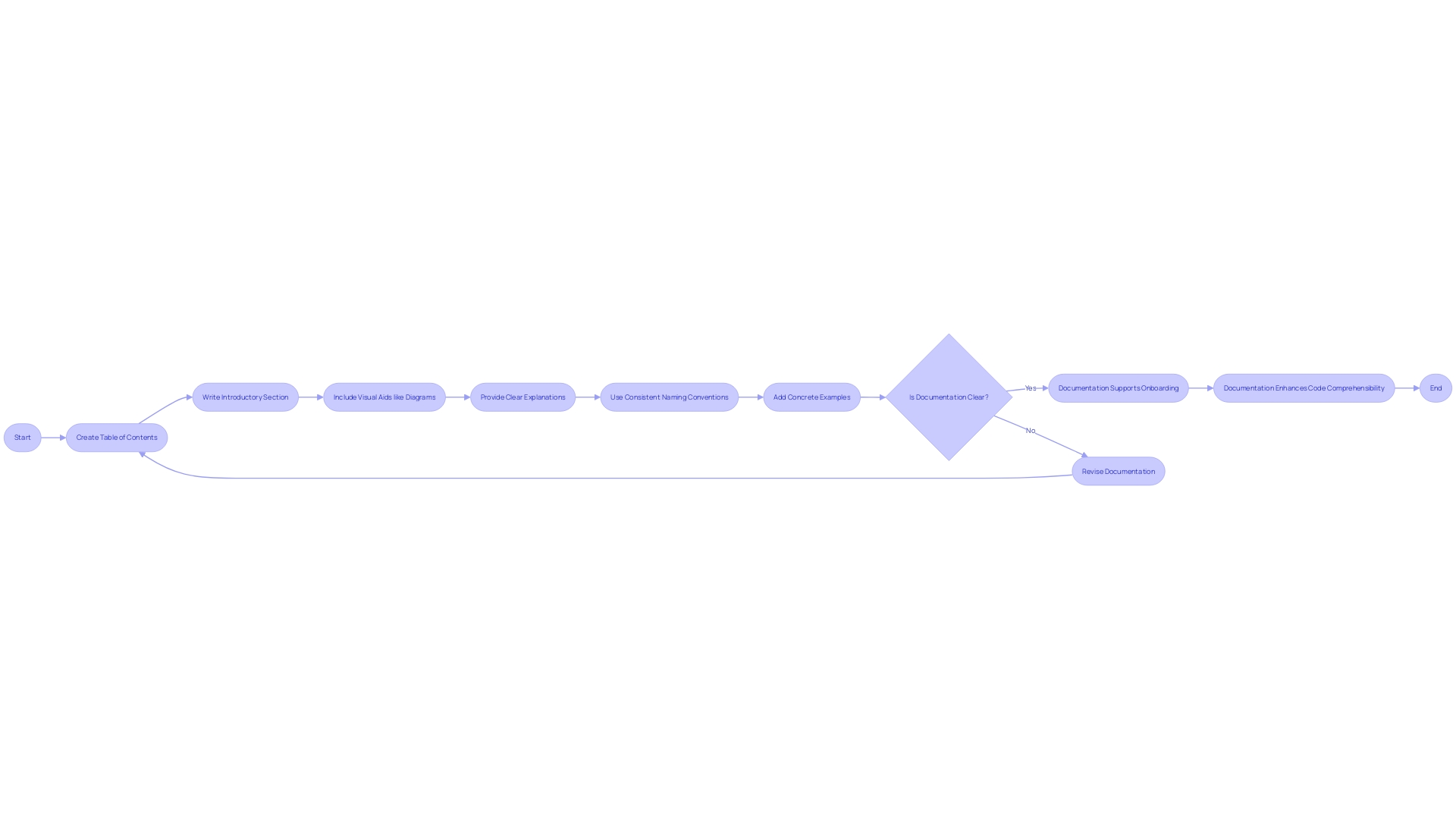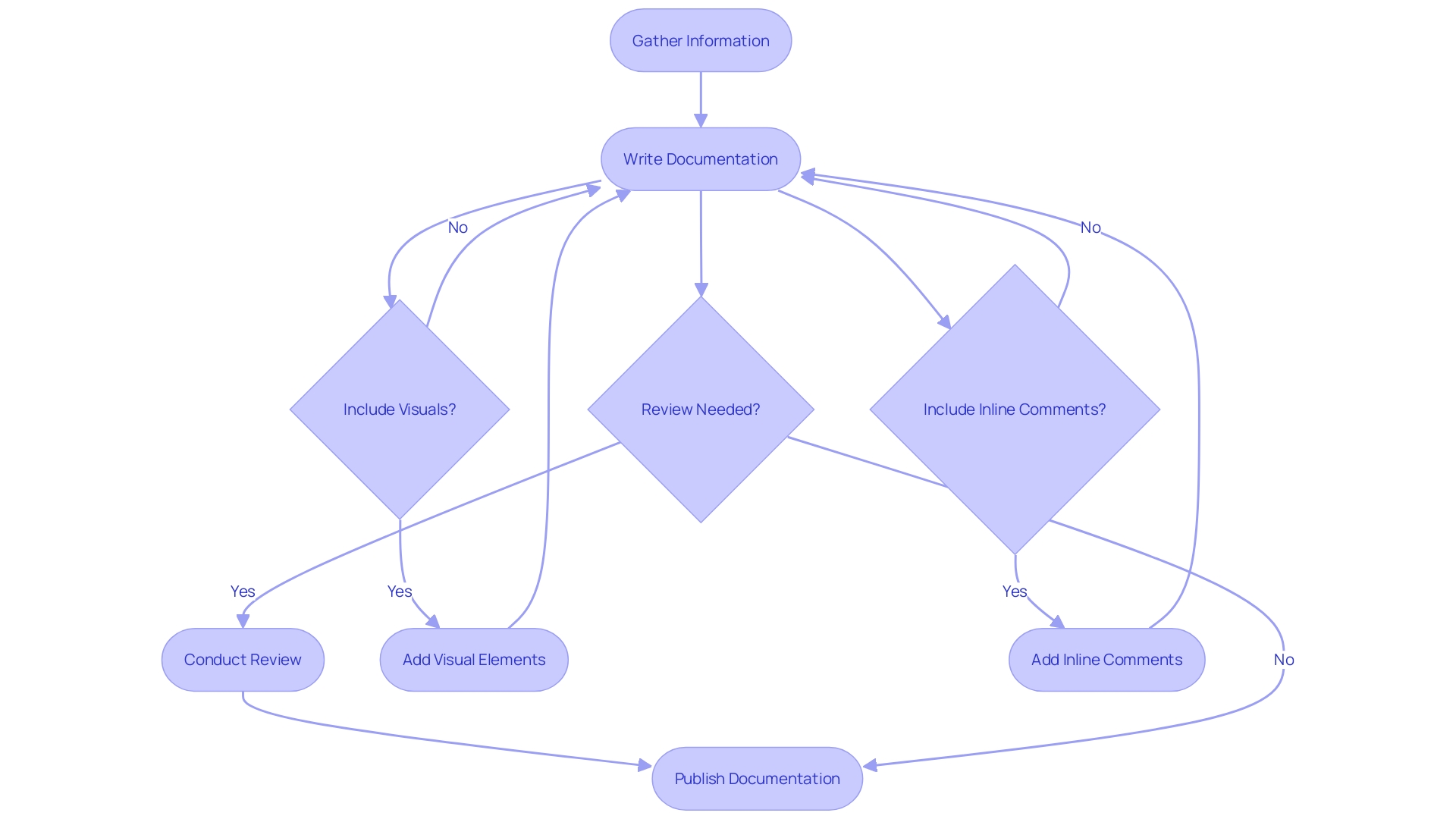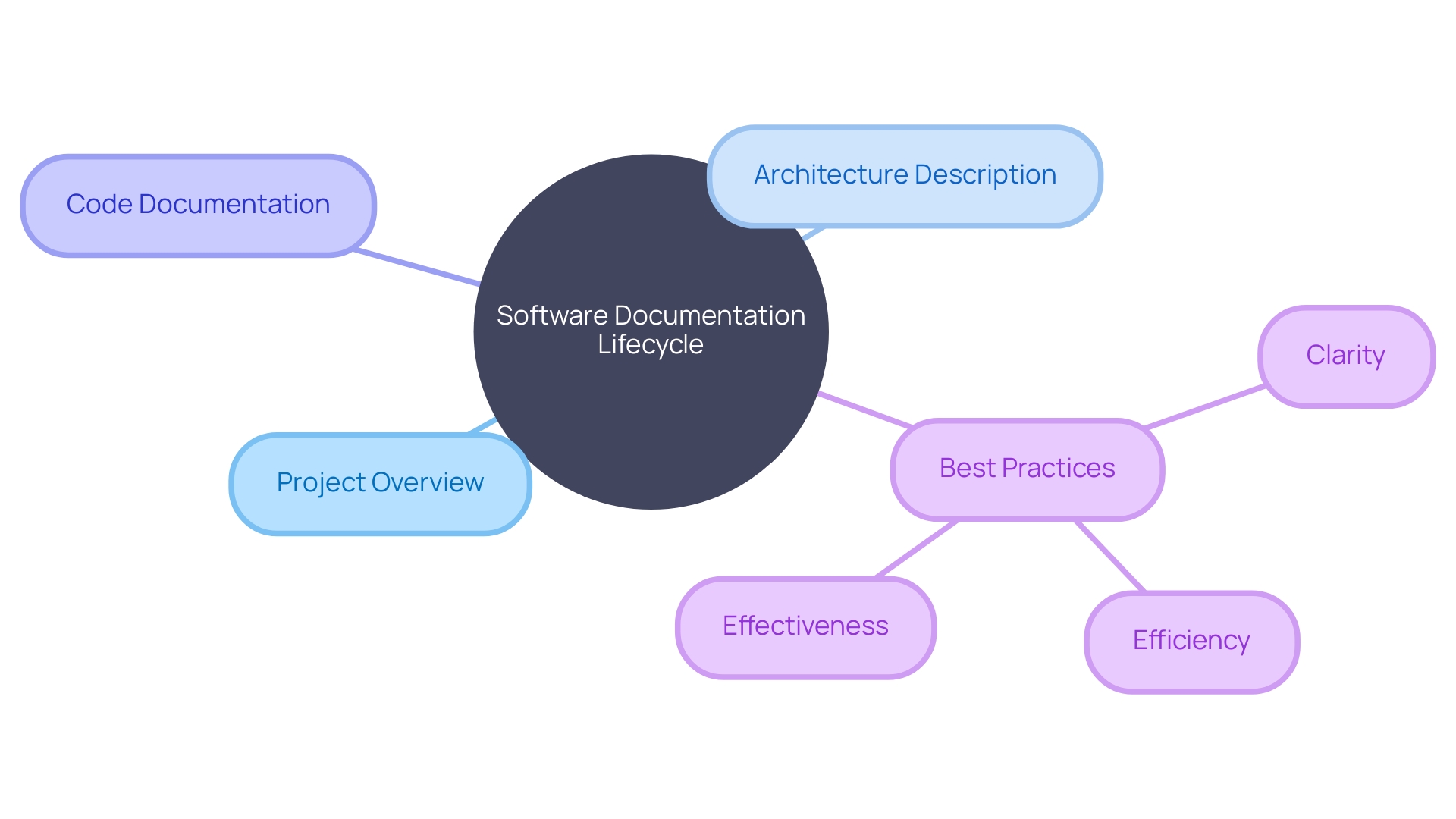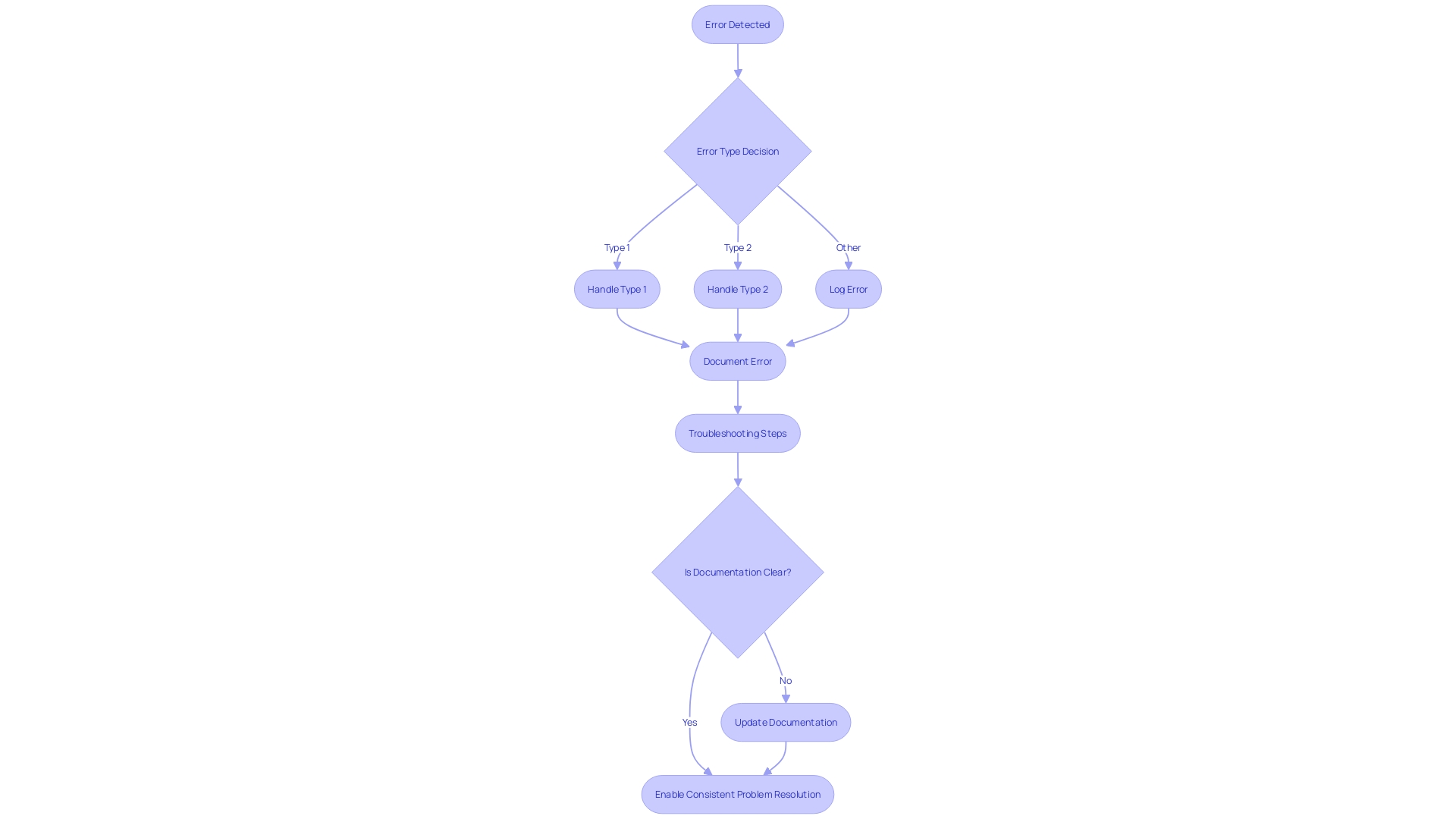Introduction
Code documentation plays a crucial role in software development, providing developers with a comprehensive understanding of the software's architecture, design, and functions. It enhances readability, making the code more accessible and easier to use. Good documentation also fosters collaboration and speeds up the onboarding process for new team members.
In this article, we will explore the importance of code documentation, different types of documentation, best practices for writing documentation, and the tools and technologies available for effective code documentation. Whether you are a seasoned developer or just starting out, this article will guide you on how to create clear, concise, and informative code documentation to maximize efficiency and productivity.
Why Code Documentation is Important
Software documentation is a cornerstone of development, forming a navigational map for coding projects. It is the lifeline that provides developers with a comprehensive breakdown of the software’s architecture, design, and functions. With good documentation, readability is amplified, allowing the user to grasp the project quickly and developers to work more efficiently.
Imagine diving into a project teeming with intricate functions and extensive code; without proper guidance, the complexity can be overwhelming. Documentation illuminates the ‘why’ behind the code just as much as the ‘what’, making the software accessible and easier to use.
According to Don Kaluarachchi, documentation and code comments significantly enhance clarity and comprehension. They offer necessary context, converting programming into an understandable narrative for users, and foster collaboration within teams by bridging expertise gaps. A study suggests developers spend approximately 70% of their time understanding code, highlighting the importance of comprehensibility in source code.
This is why clear, concise documentation is vital, as it supports both code review and speeds up the onboarding process for new team members. Furthermore, AI pair-programming tools like GitHub Copilot demonstrate the tangible impact documentation has on productivity, suggesting improvements in task time, product quality, and cognitive load.
When it comes down to crafting documentation, focus on creating material that’s clear, direct, and eschews unnecessarily technical jargon. This, as advocated by Scalabrino et al., helps in distinguishing between readable and understandable code, and supports developers in decoding unfamiliar APIs. Documentation's role in a project is undisputed—it’s a strategic asset that both guides and educates, inherently improving the software development life cycle.
Types of Code Documentation
The tapestry of code documentation is an intricate one, with each thread serving a distinct yet interrelated purpose. Key among them are inline comments, the cryptic whispers that live within the code itself. They serve as signposts, guiding future developers through the labyrinth of logic and decisions, often shedding light on the cryptic 'why' behind a chunk of code.
Beyond these succinct annotations, we find the more elaborate function and method documentation. Here, one can discern the intentions of individual pieces of code, comprehend the input they demand, the output they pledge, and unfurl any nuances that lurk in their implementation. This level of detail fosters correct and effective usage, avoiding the pitfalls of misinterpretation.
Furthermore, API documentation stands as the cornerstone for developers who seek to weave external services into their applications. With its meticulous delineation of endpoints, request-and-response interplay, and precise error codex, it equips developers with the essentials for seamless integration. Lastly, tutorials and guides forge a clear path through the wilderness of development tasks.
They are the seasoned mentors who walk side-by-side with developers, imparting wisdom in actionable steps and practical examples. These narrative educational tools transform abstract concepts into achievable actions, empowering developers to bring forth their creative visions.
Best Practices for Writing Code Documentation
Crafting top-tier code documentation is not just about avoiding ambiguity; it's about creating a resource that is as intuitive to navigate as it is informative. Begin with a discernible structure—akin to a road map of a document—complete with a table of contents, and an introductory section that lays out the underpinning principles shaping your code's architecture. This foundational setup is crucial, functioning as a compass for understanding subsequent choices that may not be immediately clear.
Documentation should be alive, featuring visual aids like diagrams to succinctly communicate complex ideas and using markdown to enhance readability and facilitate easy updates. Consider the needs of different stakeholders when composing your documentation: from a seasoned developer to someone who's stepping into the project for the first time. Providing clear explanations, as you would to someone unfamiliar with the project, ensures that your documentation is accessible to all prospective readers.
Consistent naming conventions are vital, as highlighted by a case at Lufthansa that revealed the complexity and confusion stemming from seven different uses of the term "Flight". Distinct, descriptive nomenclatures prevent such ambiguity. Adding concrete examples enlivens your documentation, allowing users to visualize and grasp practical applications of your code; it's a strategy that plays a significant role in web accessibility, enabling a diverse audience to engage with your work.
To reiterate the significance of documentation, consider that developers spend approximately 70% of their time understanding code. Therefore, documentation contributes to efficient onboarding and code comprehensibility, underscoring its imperative role in programming. This function is not just beneficial; it's necessary for any project that aims for clarity, inclusivity, and efficiency in development.

Documenting Code Elements
To grasp the essence of code elements such as functions, methods, and classes, thorough documentation is indispensable. It provides the clarity needed on their intent, inputs, outputs, and nuances that may affect their utilization. Embedding this knowledge in documentation not only benefits current developers but also future collaborators who may inherit the codebase.
As echoed in the industry, software documentation should serve as the technical compass for stakeholders, painting a clear picture of the architecture, design, and operational methodologies of the software at hand.
Consider the README file, which is often the starting point for anyone interacting with a project. An exemplary README file succinctly outlines the project, hence welcoming both contributors and users effectively into its ecosystem. Moreover, embracing web accessibility in documentation practices ensures that content is consumable by a broad spectrum of individuals, addressing any potential obstacles such as health, economic, or geographical barriers.
As software solutions evolve and cater to end-users who configure and interface directly with systems, documentation serves as a bridge between technical and business realms, ensuring a common understanding.
From real-world usage, having a detailed documentation process aligns with the foundational principles of software development. It is a pivotal tool for setting expectations and guiding the development journey smoothly, thereby preventing the chaos of a project adrift.
Using Inline Comments and Visual Aids
The cornerstone of software development resides in its documentation, illuminating the intricate design and architecture that construct the backbone of any software product. Crafting software documentation is not merely producing text; it's about creating a guiding light for end-users and developers alike to navigate the complexities with ease. Consider the README file as a prime example; it paints a vivid overview of the project, setting the stage for understanding and engagement.
It is written, not just to inform but also to captivate and clarify.
Documentation is an art, practiced with precision and care, ensuring it remains clear, yet thorough, serving as a beacon for anyone delving into the code base. Visual elements and inline comments are the brushstrokes that add depth to this masterpiece. They provide layers of context that make code not just readable, but truly comprehensible.
After all, understanding a code's functionality is pivotal, since studies underscore that developers invest approximately 70% of their time deciphering it. Clarity here is not just a courtesy; it is essential.
Thus, incorporating inline annotations and visual cues is more than just a good practice; it's a strategy that plays a vital role in enhancing program comprehension. It transcends the mere aesthetics of organized code; these components actively bridge the gap between readability and understandability. Embracing the difference between these terms is key, as echoed by Scalabrino and others in the field: code can be legible yet leave its deeper meanings shrouded in mystery without the proper pointers to guide the developer's journey.
So we embrace documentation as a strategic intel resource, and though often viewed as a technicality, it holds the potential to convert a chaotic constellation of code into a galaxy of guided discovery. It's not just a document; it's the distilled essence of the software, inviting collaboration, easing onboarding, and ultimately accelerating the journey from conception to realization.

Documenting Interfaces and External Dependencies
Creating high-quality documentation for software interfaces and dependencies, such as APIs, is not just beneficial—it's essential. Getting to grips with elaborating clear, comprehensive API documentation can drastically reduce onboarding times for new developers, freelancers, and contributors to open-source projects. Properly structured documentation acts as the lifeline for developers to understand, utilize, and integrate software components.
As the first port of call in any project, the README file must be crafted with precision. It should encapsulate a project overview that is informative yet succinct, catering to the initial curiosity and need for orientation among various stakeholders. Going beyond a mere introduction, effective documentation delves into the architecture of the software, shedding light on the underlying design principles and evolutionary traits of the system.
Researchers point out the significant challenges faced by developers in familiarizing themselves with the project's features, particularly the architecture of the software. Studies highlight that an astounding portion of software architecture literature is devoted to the human aspects of software systems, emphasizing the need for sharing knowledge in a structured and understandable format.
The art of code documentation therefore lies in its ability to be concise and immediately relevant, steering clear of jargon that hinders accessibility. A clear-cut documentation benefits users and developers alike, as one expert states, "Documentation increases readability, guides the user to get a clear idea about the project, and also helps a developer to understand it well and work on it." Furthermore, focusing on 'why' a code functions the way it does, as much as 'what' it does, provides invaluable context that enriches the overall understanding.
In essence, by adhering to these universally recognized best practices and expert insights, documentation iteratively paves the way for efficient and effective software development, communication among stakeholders, and ultimately, the success of the project.

Testing and Security Considerations
Effective code documentation transcends mere functionality; it integrates thorough testing procedures and proactive security measures to fortify code against vulnerabilities. The README file is at the heart of this process, offering a succinct yet detailed project overview—a beacon for developers, contributors, and users navigating your software's complexities. Within this vital document, one must incorporate the essentials as outlined by best practices.
In the spirit of 'Security by Design,' developers are encouraged to embed security considerations into the software lifecycle right from inception, evident in the guidelines of NISTIR 8397. These comprehensive standards underscore the importance of developer verification of software to uphold reliability across all programming languages. It's about constructing a robust defensive framework that scales agilely, suiting rapid deployment cycles without compromising on security.
Addressing web accessibility within documentation ensures that a broader audience can interact with and comprehend the content, aligning with the inclusivity goals of the digital landscape. Furthermore, by implementing threat modeling and routine risk assessments, potential faults are identified early, preventing them from seeping deep into the codebase. By posing specific security questions during the feature's inception, you can discern the applicable security paradigms and maintain a vigilant stance throughout the development process.
This proactive approach not only enhances the safety of the software supply chain—where even minor neglect can invite devastating cyber incidents—but also resonates with the core objective to keep 'secrets' secure, ensuring that sensitive data like API keys and credentials remain well-protected.
Licensing and Legal Information
Incorporating legal information in code documentation is not just a good practice but a necessity, particularly when incorporating open-source components. Grasping the essence of software licenses can drastically affect how you use, alter, and distribute the code. Open source licenses are pivotal, offering a spectrum of rights and responsibilities that can empower or limit how you interact with the code.
They're the linchpin of collaborative software development, enabling innovators to build upon existing code, which can significantly expedite technological progress.
Permissive and copyleft are the two primary open-source license categories, each with its implications. Permissive licenses are the less restrictive type, allowing the integration of open-source software into proprietary projects without the obligation to release the derivative works under the same open-source terms. This freedom is a boon for developers looking to leverage open-source software without sharing their modifications with the community.
Understanding the distinctions between these licenses is of paramount importance for developers, ensuring that they adhere to the legal frameworks and respect the intellectual property of others while safeguarding their own creations.
Error Handling and Troubleshooting
Providing detailed documentation on error handling and actionable troubleshooting advice is essential for minimizing interruptions in the development process. When an API delivers bad news, such as an error, it must do so in a structured, informative, and actionable manner. Gone are the days of the 'Wild West of error formats'—standardization is key to ensuring that developers can diagnose problems consistently.
To enhance code maintainability and reduce time spent debugging, it's critical too clearly document common errors and offer practical strategies for resolution.
Additionally, documentation should be clear, concise, and directly relevant to the codebase. An overly verbose documentation can end up confusing developers rather than aiding them. To execute this effectively, code documentation must be crafted with attention, care, and commitment.
This includes a thorough README file detailing the project overview, functionalities, design, use cases, and troubleshooting tips for common issues. Adopting such practices can result in significant productivity improvements for the development team, as insights from GitHub suggest, with AI pair-programming tools showing particularly positive impacts on developers' work across all skill levels.

Tools and Technologies for Code Documentation
Software documentation is not just a set of instructions; it's the blueprint that integrates the software's design, architecture, and functionality into a coherent whole. This essential component is the foundation of software development, ensuring that end-users, administrators, and developers have comprehensive insight into the product. It operates as a navigational map throughout the development process, setting expectations and aligning understanding across all stakeholders.
Without this roadmap, a software project may flounder, becoming disorganized and aimless.
Effective documentation categorizes into two primary domains—process documentation, which details the development and maintenance workflow of the software. In today's digital environment, leveraging efficient tools for generating and managing such documentation has become a critical practice. These tools, which vary in features and benefits, are central in creating a structured and easily navigable corpus of knowledge that strengthens the entire development framework.
Examples of Well-Documented Code
Delving into exemplary API documentation reveals industry standards for crafting code that not only functions but flourishes in a collaborative environment. Let's dissect the blueprint of a Building Management System (BMS), a sort of 'smart house' for large-scale constructions like shopping malls, to illustrate this point. A robustly documented BMS showcases how, through a unified system, crucial functionalities such as lighting and climate control can be monitored and managed.
Moreover, this documentation is instrumental in promptly identifying and addressing malfunctions, which is critical in such expansive settings. Mark Seeman's book, 'Code That Fits In Your Head,' suggests that humane code fosters a conversation between the creator, future maintainers, and the code itself. By ensuring that your code is an effective means of communication, you establish a clear path for future interactions with other developers.
With that in mind, let's explore the components of a README file, an indispensable tool elucidating a project's purpose and usage. This file encapsulates everything from a project's scope to guidelines for contributing, serving as a vital reference for developers. Embracing this level of clarity speaks volumes about the long-term viability of software, aligning with the principles of clean code as discussed in Robert C. Martin's 'Clean Code.'
Here, code is treated as a living document, simple to decipher and modify. Supported by statistics showing developers spend approximately 70% of their time understanding code, the incentive for well-documented code becomes self-evident—aiding code review processes and easing the transition for new team members. As we scrutinize this approach to documentation, we also heed insights from AI enhancements in coding, like GitHub Copilot, which have notably improved productivity through predictive code snippets.
By folding these practices into our repertoire, we not only adhere to best practices but also carve out a methodology that can be followed by developers at any level.
Conclusion
Code documentation is vital for efficient and productive software development. It enhances readability, accessibility, and collaboration among team members. Different types of documentation, including inline comments, function and method documentation, API documentation, and tutorials/guides, work together to provide a comprehensive understanding of the software.
To write effective code documentation, prioritize clarity, avoid technical jargon, and consider the needs of different stakeholders. Consistent naming conventions, concrete examples, and visual aids improve readability and understanding.
Thorough documentation of code elements, such as functions, methods, and classes, is crucial for current and future developers. The README file acts as a starting point and should offer a succinct overview while embracing web accessibility.
Incorporating inline comments and visual aids is key to enhancing program comprehension and bridging the gap between readability and understandability.
Code documentation also covers testing procedures, security considerations, licensing, and legal information. These aspects contribute to efficient and secure software development.
Tools and technologies are available to generate and manage code documentation effectively, providing a structured and easily navigable repository of knowledge.
Prioritizing code documentation maximizes efficiency and productivity throughout the software development lifecycle. Clear, concise, and informative documentation paves the way for successful collaboration, onboarding, and project success.
Start documenting your code effectively with Kodezi CLI and improve your productivity.
Frequently Asked Questions
What is code documentation?
Code documentation is a detailed description of a software's architecture, design, functions, and a guide for developers to understand, use, and maintain the software.
Why is code documentation important?
Documentation is crucial because it increases readability, helps developers understand and maintain code, fosters efficient collaboration, speeds up the onboarding process, and enhances productivity.
How much time do developers spend understanding code?
Developers spend approximately 70% of their time understanding code, which underscores the importance of clear and comprehensive documentation.
What are the types of code documentation?
Key types of code documentation include inline comments, function/method documentation, API documentation, tutorials, and guides.
What are the best practices for writing code documentation?
Best practices include having a clear structure with a table of contents, using visual aids, consistent naming conventions, providing concrete examples, and ensuring accessibility for a diverse audience.
What is the purpose of inline comments in code?
Inline comments act as signposts within the code, clarifying the reasons behind coding decisions and helping future developers navigate through complex logic.
What should be included in the README file?
A README file should offer an informative and succinct overview of the project, including its purpose, architecture, usage, and guidelines for contributors.
Why is documenting interfaces and external dependencies essential?
Documenting interfaces like APIs is essential to help developers understand, utilize, and integrate software components effectively, thus reducing onboarding times.
What role does error handling and troubleshooting play in documentation?
Documenting error handling and troubleshooting is crucial for minimizing development interruptions by providing structured, informative, and actionable advice for resolving issues.
How does security factor into code documentation?
Security considerations should be integrated into documentation from inception, outlining proactive measures and best practices to fortify code against vulnerabilities.
Why is it important to include licensing and legal information in documentation?
Including legal information, especially regarding open-source licenses, ensures that developers adhere to legal frameworks and respect intellectual property while safeguarding their own creations.
What tools and technologies are used for code documentation?
There are various tools and technologies designed to help create structured and navigable documentation that supports the software development lifecycle.
Can you give an example of well-documented code?
An example is a Building Management System (BMS) API documentation, which clearly communicates the system's functionalities, enabling efficient monitoring and management.
What insights can we gain from AI enhancements like GitHub Copilot regarding documentation?
AI tools like GitHub Copilot demonstrate that good documentation can significantly improve productivity by suggesting predictive code snippets and improvements.




